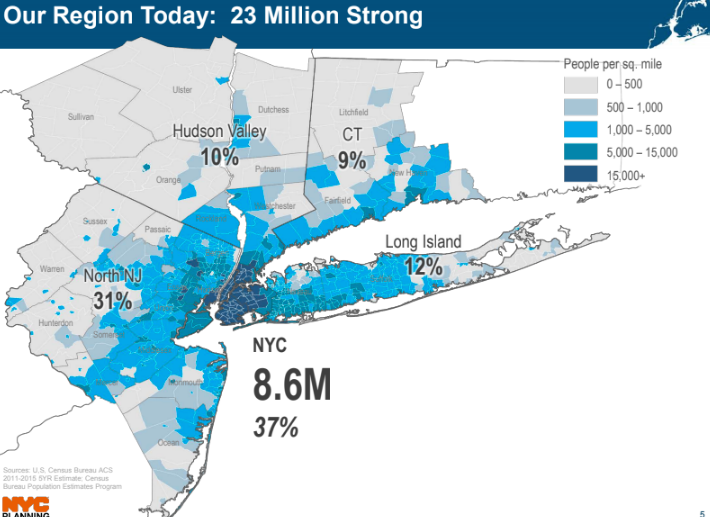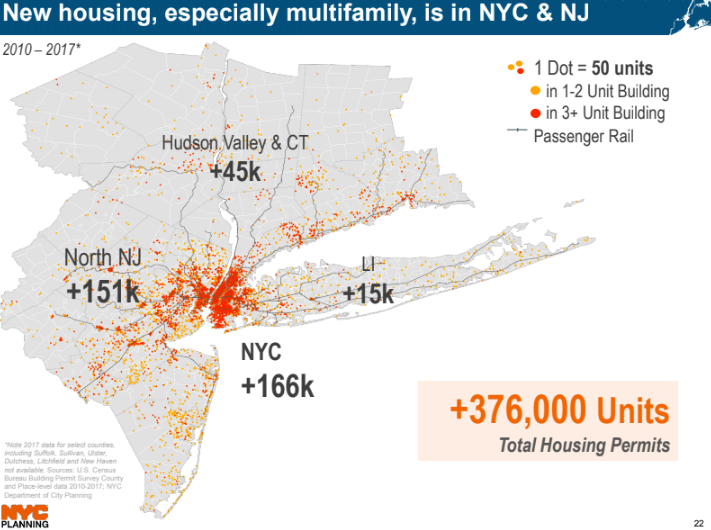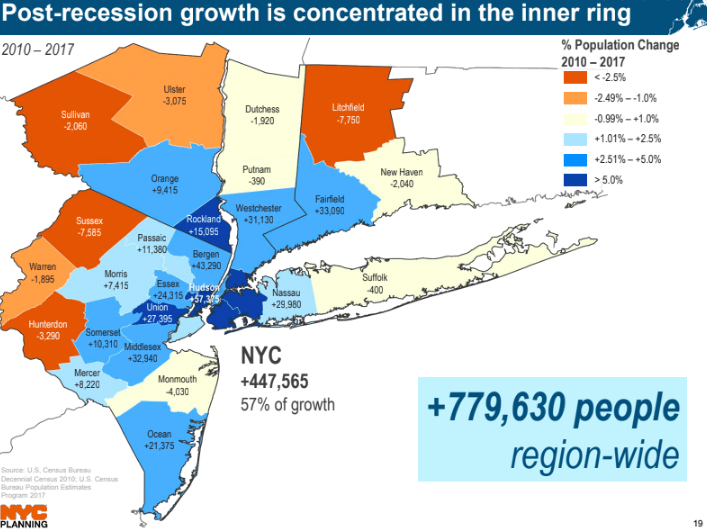City Council Passes Bill Mandating Public Broadcast of Citywide Debates

Council Member Borelli (photo: Emil Cohen/City Council)
The general election debates in last year’s mayoral race largely lacked substance and order, as Mayor Bill de Blasio twice faced off against two challengers -- Republican Assembly Member Nicole Malliotakis and independent candidate Bo Dietl. Perhaps in part because de Blasio was not seen as vulnerable to defeat in an overwhelmingly Democratic city, the debates also lacked a wide audience. But there was another issue at play, for those debates and others mandated as part of the city’s campaign finance system: public accessibility to view them.
City Council Member Joe Borelli and his colleagues seek to expand access to televised city election debates -- which can be held for the three citywide positions in party primaries and general elections -- through a bill passed by the Council on Wednesday.
Borelli’s bill requires that all mandatory debates hosted by the New York City Campaign Finance Board, in partnership with numerous local news organizations, be publicly broadcast at no charge on a city-owned or operated television channel to reach the widest possible audience. This would be in addition to broadcast by any selected network as the CFB typically chooses a lead TV station for each debate.
The bill was prompted largely because some of the debates, including the first general election mayoral debate and the lone general election debates in the 2017 races for comptroller and public advocate, were broadcast on television on NY1 and accessible only to those with cable television packages that include the channel. (NY1 did choose to air its debates live for free on its website and social media, as did other debate sponsors, and archived footage is easily available on the Campaign Finance Board website.)
“This may not be priority one and we’re likely three years away from any city-wide debates, but the fact that we spend so much public money to increase voter turnout to then only allow a small percentage of city residents to see the debate seemed counter-productive,” Borelli said, in a statement after the passage of the bill. “I can’t believe this would have even been allowed in the first place and I’m glad I’m changing the rules.”
He said that more than half of the city’s residents did not have access to certain debates because they either could not afford or refused to subscribe to Spectrum, NY1’s parent company. In the 2017 election cycle, the debates not televised by NY1 were broadcast on TV by CBS-2 New York, a network typically part of all basic television packages. This included the second of two general election mayoral debates.
A press release from Borelli’s office said the bill is expected to be signed by the mayor. Seth Stein, a mayoral spokesperson said in a statement, "We look forward to reviewing the final version of this bill that was passed by the Council. The Mayor supports measures to make our democratic process more open and accessible to New Yorkers."
The bill has general support from government reform groups. At an April 26 hearing of the Committee on Governmental Operations, Alex Camarda, senior policy advisor at Reinvent Albany, said, “Generally speaking, we encourage civic participation in our democracy through the use of modern technology.”
Camarda also urged the committee to consider webcasting debates on one or several city government-run sites. “We think that that’s advantageous, not only because it’s less expensive, it allows for archiving at much lower costs, and it can be watched on smart phones which, more and more, is what people watch their content on these days,” Camarda said. Those proposals weren’t reflected in the final legislation.
In a phone interview Wednesday, Camarda said, “It can’t hurt to expand the TV channels that debates are on but we would prefer webcasting and more modern modes of delivery be mandated.”
“Access to information is essential to make elections fair for everyone,” said Assembly Member Malliotakis, in a statement supporting the bill’s passage. “The more widespread debate coverage is, the more prepared voters will be to make an informed decision of who they want to represent them in government.”
The CFB also came out in support of the bill. Executive Director Amy Loprest said in a statement to Gotham Gazette that the agency is “committed to getting voters the information they need to cast an informed ballot on Election Day.”
“These efforts include helping all New Yorkers view the official citywide debates to learn more about candidates seeking elected office,” she added. “Today’s passage of Int. No. 14-A, requiring these debates to be simulcast on a city-owned or operated television channel, will help ensure that as many New Yorkers as possible have live access to the debates.”
***
by Samar Khurshid, senior reporter, Gotham Gazette
@samarkhurshid @GothamGazette
With New Data, City Takes First Step Toward Regional Planning

The NYC Metro Area (image via DCP presentation)
New York City has seen rapid post-recession population and job growth, while housing development has not kept pace, and while areas in the metropolitan area surrounding the city have also seen growth, it has been at a slower pace than the city’s. Still, there are 1 million commuters into the city who account for 28 percent of the city labor force, and as job opportunities in the five boroughs continue to grow, housing options in the areas just outside the city are troublingly stagnant. Meanwhile, out-migration from the city to other parts of the area and other parts of the country has slowed in recent years.
These are a few of the key findings presented on Tuesday morning by Carolyn Grossman Meagher, director of regional planning at the New York City Department of City Planning, at an event hosted by the Association for a Better New York, a business group.
The regional planning division of DCP, formed just two years ago from a recommendation from Mayor de Blasio’s OneNYC plan, has produced a trove of regional data and is beginning to take its work public, evidenced by Grossman Meagher’s presentation, which also included the launch of City Planning’s Metro Region Explorer, an interactive online tool created by DCP's Planning Labs unit that allows public access to regional economic, housing, and population data and trends. The region is home to 23 million people in 9 million households, Grossman Meagher’s presentation showed, with 10.3 million jobs and productivity that accounts for 10 percent of gross domestic product (GDP).

The explorer application shows changes since 2000, with a focus on the 2008-2017 timeframe, putting things in “a regional context” to help show that New York City “has, and is dependent on, a regional ecosystem.”
On Tuesday morning, Grossman Meagher highlighted her unit’s early work through a slideshow of maps, graphs, data, and key takeaways; stressed the need to think regionally about growth and development; and presented research that both acknowledges major challenges, like the region’s housing crisis, but also stopped short of pinpointing concrete solutions beyond a vague need for development outside and within the city.
The research, which tracks trends across 31 counties -- including New York City’s five -- and over 900 municipalities in parts of the tri-state area of New York, New Jersey, and Connecticut, found large imbalances between housing production and employment change in New York City, suburban areas north and east of the city, inner New Jersey, and portions of southern Connecticut, disparities that can potentially impact the way the city thinks about infrastructure demand and development in the coming years. In areas like Long Island and Westchester, where communities have experienced employment gain but relatively little new housing, imbalances affect commuting patterns, transit infrastructure, and planning needs.
“The balance between the city and the suburbs is shifting,” is one of the key takeaways of the data as presented by Grossman Meagher, given that fewer households are leaving the five boroughs for surrounding areas, likely in part due to the lack of housing available.

In the era after the onset of the most recent economic recession hit, roughly 2008-2016, New York City rebounded the quickest in terms of employment gains. Currently, the city is experiencing its highest levels of employment and an annual job growth rate of about 2 percent, while the rest of the region experienced an annual job growth rate of 0.3 percent in the period from 2008 to 2016. At the same time, New York City has also added 180,000 more jobs than housing units in the post-recession period, while areas such as inner New Jersey increasingly become more housing-oriented.
The regional forecasts expect housing demands to reach a level of 1.6 million new households by 2050, or an approximate average of about 40,000 new households per year. While that annual mark of added households has been met so far, it is mainly concentrated in New York City, with 142,000 units added in the period between 2010 and 2016, and New Jersey, with 95,000 units.

“We don’t think that can continue forever,” Grossman Meagher said at the event. “And there’s a real question as to whether or not other parts of the suburbs will find their way back to performing at these levels when they’re underperforming by about half.”
As the imbalance between job growth and housing development continues region-wide, many are looking towards New York City for employment opportunities, a trend that has significant impact on commuter patterns and infrastructure demand.
“The demand that we might experience for infrastructure really changes if you imagine a city that continues to recentralize as we currently are,” said Grossman Meagher.
The research also found that rent affordability is yet another challenge that the entire region faces as the relationship between the city and the suburbs substantially changes. Traditionally, suburbs have acted as a sort of “relief valve” to the city’s housing supply.
“We’re net exporters of people to the suburbs,” said Grossman Meagher. “Historically, New York City has been the engine that primes the pump of regional population. People come to New York City from all across the globe and then some – today it’s one in three – leave our city for our backyard as they look for different, maybe cheaper, ways to live in proximity to New York City’s jobs, our communities, our resources.” In return, the housing that these migrants leave allows the city to open up availability for a portion of its housing supply.
However, given the lack of housing elsewhere and with employment increasingly centralized towards the core of the region, fewer people are leaving the city and of those who are leaving, fewer are moving into the suburbs rather than into other metropolitan areas in the U.S.
“In other words, as a New Yorker, it is becoming less of an opportunity for me to avail myself to economic resources outside the city because the job growth just isn’t there,” said Grossman Meagher.
Grossman Meagher also presented other findings, including that about one-third of private sector jobs in the region are office-based and that New York City holds 40 percent of the total private employment in the region.
She stressed that the city can now offer essential data to other government entities in the region and begin more collaborative conversation than has occurred in the past.
Ultimately, the research poses daunting challenges for DCP, its Regional Planning Division, the city, the region, planners, elected and appointed officials, and other stakeholders, like residents and business owners. The plan is that the Metro Region Explorer will help people, including planners, understand how New York City is inevitably entwined with the surrounding regional network and to confront what this dynamic relationship means for the future.
“We really rise and fall together,” said Grossman Meagher. “And, yet, as planners, the city really hasn’t focused for a long time on our relationship to the region.”
[Related: New York City Doesn't Have a Comprehensive Plan; Does It Need One?]
***
by Chelsey Sanchez @GothamGazette
James Victory in Attorney General Race Would Trigger Citywide Special Election

Public Advocate Letitia James (photo: Mayor's Office)
Eric Schneiderman’s resignation has triggered what could be a domino effect in New York politics, potentially creating vacancies in local offices and perhaps leading to New York City’s first citywide special election.
When Schneiderman stepped down from the post of attorney general, it kicked off a mad dash of people interested in becoming the next top legal officer of New York State. Even as the state Legislature moves through a process to choose an interim appointee, others have their eyes set on the fall election. New York City Public Advocate Letitia James quickly announced her candidacy and is the clear favorite for the Democratic nomination, though other potential candidates are weighing whether to enter the fray.
Additional candidates are also seeking or considering pursuing the nominations of other parties, including law professor Zephyr Teachout and John Cahill, the 2014 Republican nominee for attorney general and former chief of staff to Governor George Pataki. The Democratic nominee will likely be the favorite to win statewide in November given that no other party has won a statewide race since Pataki in 2002.
If James prevails in the September Democratic primary and beats a Republican and other opponents in November, she would likely be sworn in as attorney general on January 1, 2019 leaving her current office vacant. That would prompt a special election for the post of public advocate, the first of its kind in a citywide race in New York since the establishment of the city’s campaign finance program.
It’s easy to imagine that James could prevail with strong backing from the Democratic establishment -- including Governor Andrew Cuomo and state Assembly Speaker Carl Heastie from the Bronx -- as well as labor unions, which have already begun to announce their support for her. Democrats have a significant voter enrollment advantage in New York and this year is expected to be a strong year for Democrats across the board.
According to the city charter, three days after a public advocate vacancy, “The mayor is required to issue a proclamation calling a special election within 45 days,” said Jerry Goldfeder, an election lawyer and special counsel at Stroock & Stroock & Lavan. The election would be nonpartisan, open to any candidate who can create a new party line and gather enough signatures to appear on the ballot.
Just like for vacancies in City Council seats, the victor of the special election will not serve the remainder of the public advocate’s term. Another primary contest and general election would take place in the fall of 2019 for a candidate to hold the seat through 2021.
Such a special election could easily trigger a crowded field as current officeholders -- whether City Council members, borough presidents, or state legislators -- would not have to give up their seats to run. Most of the City Council and all five borough presidents will be term limited from running for reelection in 2021, leading many to already be eyeing their next move.
The timing of the race could also be tricky. The first Tuesday within 45 days would be February 19, just one day after President’s Day. Special elections tend not to be scheduled just after a holiday and in the past, elections have been pushed forward or pulled back by a week. In 2015, for instance, a special election for the 17th City Council district was moved forward to February 23, the week after President’s Day.
The special election would also be the first race to be held in the city since new contribution and spending limits went into effect for the 2021 election cycle.
In a public advocate special election, the contribution limit would be $2,550, half the regular $5,100 contribution limit for the position. Other thresholds remain the same, however. A public advocate candidate is allowed to spend up to $4.6 million in a special election. To qualify for the CFB’s public matching funds program -- which matches qualifying small dollar donations up to $175 at a 6-to-1 ratio -- a candidate would have to raise at minimum $125,000 with at least 500 contributors giving $10 or more. A candidate can receive a maximum of $2.5 million in public funds.
At a City Council budget hearing on Thursday, New York City Campaign Finance Board Executive Director Amy Loprest told Council members on the governmental operations committee that the agency had only budgeted about $1 million for public funds for potential special elections in the next fiscal year that begins July 1 of this year and runs through June 2019.
“Do you believe this is enough?” asked Council Member Fernando Cabrera, chair of the committee. “Let’s suppose we have a citywide race in the city and we were to add a couple of extra Council members who might decide to move on to other aspirations. Would a million dollars be enough, if we were in that situation?”
“We submitted our budget in March. The political landscape changes all the time so I’d have to go back and analyze whether a million dollars will be sufficient,” Loprest said. “The law does allow for emergency appropriations of public funds if the fund that was allocated was not enough.”
A CFB spokesperson said Friday that it’s unlikely any one candidate, let alone several, could raise enough funds in the six-week run up to the special election to qualify for the full matching fund outlay. In the 2017 public advocate campaign, the spokesperson pointed out, James raised $947,530 and received a $756,486 public funds payment. None of the other candidates met the threshold to qualify for public funds.
[Read: Letitia James Launches Campaign for Attorney General]
***
by Samar Khurshid, senior reporter, Gotham Gazette
@samarkhurshid @GothamGazette
Note - this article has been corrected to note that a City Council vacancy is filled through the same special election process as a public advocate vacancy.




